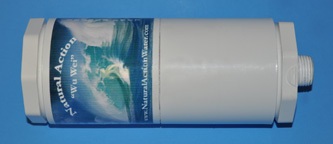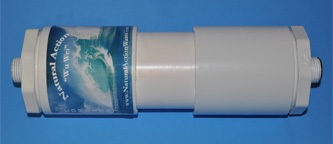Workshop Overview
“Water is the most studied material on Earth but it is remarkable
to find that the science behind its behavior and function
are so poorly understood (or even ignored), not only by people
in general, but also by scientists working with it everyday.
The small size of its molecule belies the complexity of its
actions and its singular capabilities. Liquid water’s unique
properties and chameleonic nature seem to fit ideally into
the requirements for life as can no other molecule.”-Martin
Chaplin, London South Bank Univ.
What is water... First the science:
Water is a substance composed of two hydrogen and one oxygen
atoms and also known as aqua, di-hydrogen monoxide or hydrogen
hydroxide. The molecule of water has one hydrogen bonded to
the oxygen that is in turn bonded with another hydrogen such
that at any given moment the bond angle between the two atoms
of hydrogen is 1050 and thus resembles the letter "V".
http://www.nsf.gov/news/special_reports/water/index_low.jsp?id=properties
http://www.science.uwaterloo.ca/~cchieh/cact/applychem/waterchem.html
http://www.lsbu.ac.uk/water/hbond.html
So what is Structured Water...
Structured water is pure water in nature. If you take a gallon
or ten gallons of water and pour it in a mountain stream at
the top of the mountain and then collect it at the bottom,
the water is structured. Structured water is free of memory.
It has a balanced pH. The main contingent of structured water
is life force energy (chi, prana, ki), and that life force
energy comes down to the water molecule itself. The water
molecule has the power, the individual mandate to protect
life, and that is to protect it from the things that are adverse
to life and to generously provide the things that are good
for life.
Science and structured water
The scientific community around the world abounds with various
research, findings, articles and analysis of water structure,
its enhancement, its quality and the immense value of its
energetic effects on living things. For those of you requesting
more info, more answers about the effects of Structured Water
on plants, animals, bacteria, virus, and other microbial life
forms as well as analytical observations of water’s energetic
effects on molecular structures, chemical reactions, enzymes
and mineral substances in “non living” components of the world
around us, I can only say yes, the data is immense. It is
overwhelming but equally quite incomprehensible.
Nature frequently uses the hyperbolic spiral which is externally
centripetal and internally moves towards the center, such
spirally movements are found in the spiral nebula of galaxies
in space, in the natural flow of water, blood and sap. While
the centrifugal force used by current technology, occurs in
nature in its destructive aspects, on occasions for dissolving
energy, pushing the medium from the center outwards towards
the periphery in straight lines.
The particles of the medium being first weakened and then
dissolved and broken up. "Nature uses this action to
disintegrate complexes which have lost their vitality or have
died" (p. 77 ibid.) Characteristically the centripetal,
hyperbolic spiral movement is symptomatic of falling temperature,
contraction and concentration while the centrifugal movement
is synonymous with raising temperature, heat extension, expansion
and explosion, "in nature there is a continual switch
from one movement to the other, but if development is to occur
then the movement of growth must be predominant." (p.77
ibid.)
It is possible for the person who has the advantage of this
gift of inheritance to summon up from his blood all this reservoir
of knowledge." (p.125 ibid.) Source Material: Living
Water ~ Viktor Schauberger and the Secrets of Natural Energy,Olof
Alexandersson
Professor Dr. Masaru Emoto
Using high-speed photography, Dr. Masaru Emoto discovered
that crystals formed in frozen water reveal changes when specific,
concentrated thoughts are directed toward them. He found that
water from clear springs and water that has been exposed to
loving words shows brilliant, complex, and colorful snowflake
patterns. In contrast, polluted water, or water exposed to
negative thoughts, forms incomplete, asymmetrical patterns
with dull colors. The implications of this research create
a new awareness of how we can positively impact the earth
and our personal health.
Naturally this work threatens the current paradigm of reductionist
science but completely ignores any claim of spirituality or
indigenous wisdom so that has to be kept in mind We will look
at some positive and negative thoughts on his work. Science
is like a union who fiercely protects its turf and no problem
with that, but it must be kept in perspective. And next we
will look at indigenous beliefs on water.
Now some indigenous thoughts:
Malidoma Some, “Of Water and the Spirit”
"The West’s progressive turning away from functioning
spiritual values; its total disregard for the environment
and the protection of natural resources and lack of understanding
of the spirituality of water, the violence of inner cities
with their problems of poverty, drugs, and crime; spiraling
unemployment and economic disarray; and growing intolerance
toward people of color and the values of other cultures—all
of these trends, if unchecked, will eventually bring about
a terrible self-destruction"
Nancy Alcorn- Mayan Healer “In the process
of eating, it was advised that we show gratitude to the food
we are about to ingest and to respect the merging of pranic
energies that was about to take place. Food as well as water
can be energetically programmed. Eat organic food and food
that is in season with your place on the planet. This allows
you to be in harmony with the cycles of the sun and the moon
and the earth’s seasonal changes. It is important to stay
hydrated because water keeps the crystalline matrix that is
developing within our own bodies clear which allows it to
hum. There are crystals in the pineal gland and in the brain.
Every cell has a crystalline aspect to it. Mankind is beginning
to be able to broadcast the crystalline matrix that is forming
within the physical body. The DNA of our bodies is awakening.
This is happening on a global level. It starts when we can
learn to eat higher vibration food and water.”
What can we do with all this Information...
So here we now have the culmination of modern science, spirituality,
and ancient wisdom on water. There is now something you can
do that will make a big difference in all aspects of your
journey and journeying. To change the channel so to speak.
It is all about vibration and frequency and this comes from
both quantum physics and shamanic teachings. You can now get
this frequency changing substance called “Structured Water.”
There are seven inexpensive solutions for those who want
to make a major difference in their life. Briefly they are
the Portable, Shower, Under Sink, Garden, Large RV, Whole
House & Commercial models. Each of these models features
the ability to transform ordinary water into healthy structured
water in quantities appropriate for the application.
Commercial structured water costs about $30/case of 12 liter
bottles. Knowing you should drink about 4 liters of water
a day the math is very favorable. Considering drinking water
alone, the portable device pays for itself in less than a
month. For a family it is a no brainer.
Structured Water Benefits:
- Is the ultimate heath food
- Is fresh & invigorating
- Neutralizes effects of pollutants
- Eliminates existing calcium & argonite deposits
- Dishes & cars are spotless
- Prevents & removes corrosion
- Increases life span of pipes and all water using appliances
- Plants can withstand lower temps
- Crops & plant growth increase 27-40%
- Increase efficiency of septic system
- Less soap used when washing
- Better taste of coffee & juices
- Healthier pets & Cleaner fish tank
These and more are the many benefits of on-demand structured
water. Use it for bathing, washing clothes, dishes, car, water
plants & the garden and everything else you use water
for. All these advantages more than justify the investment
in one of the large capacity models. All of these models are
available for purchase thru the Eco Village. Need more info...
download the structured
water brochure here.
Call Dave at 520 262-3306 to discuss your application and
place an order. (Note packaging design has been updated)
| Model |
|
Cost |
| Portable |
 |
$249*
$399** |
Shower
Dynamic model |
 |
$349
$499* |
Under Sink
Dynamic model |
 |
$349
$499* |
Garden
Dynamic model |
 |
$349
$499* |
Whole House
Dynamic model |
 |
$759
$1479* |
| Commercial |
 |
$1149
$2199 |
* Dynamic models are 2nd generation designs with materials
that enhance the properties of the structured water.
** The portable unit is only available in the 2nd generation
design.
Workshop Notes: Water.pdf
Workshop audio recording: Drop
Box Workshop Recording |